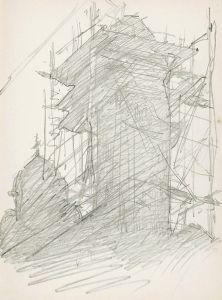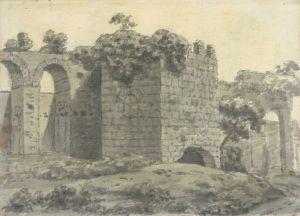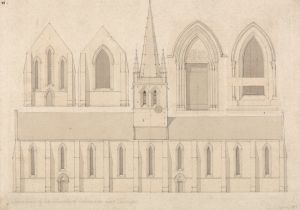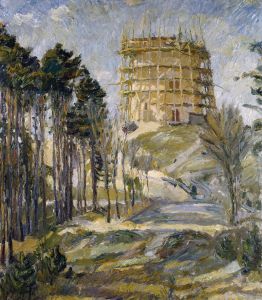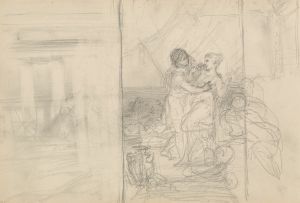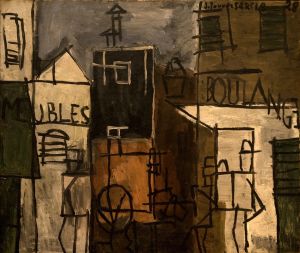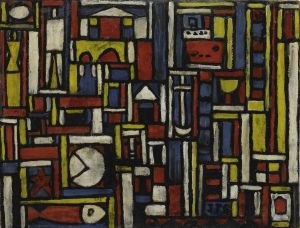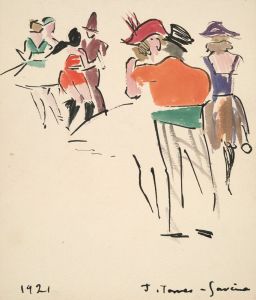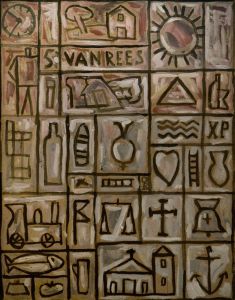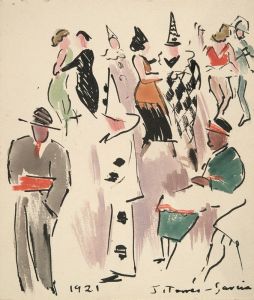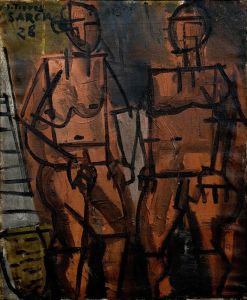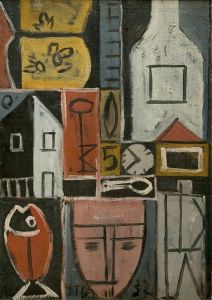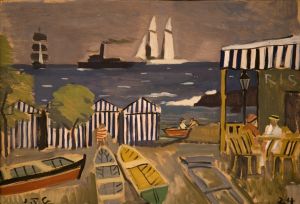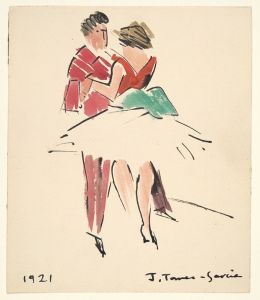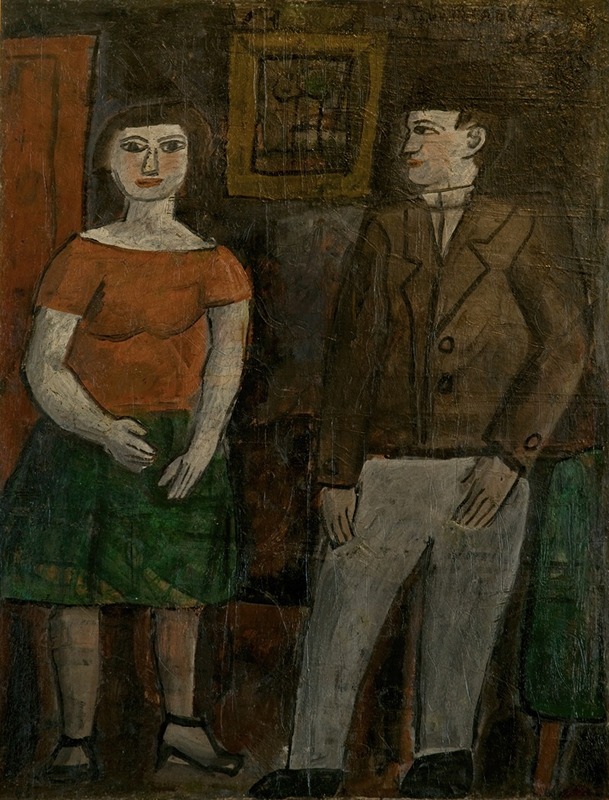
Figuras
A hand-painted replica of Joaquín Torres-García’s masterpiece Figuras, meticulously crafted by professional artists to capture the true essence of the original. Each piece is created with museum-quality canvas and rare mineral pigments, carefully painted by experienced artists with delicate brushstrokes and rich, layered colors to perfectly recreate the texture of the original artwork. Unlike machine-printed reproductions, this hand-painted version brings the painting to life, infused with the artist’s emotions and skill in every stroke. Whether for personal collection or home decoration, it instantly elevates the artistic atmosphere of any space.
Joaquín Torres-García's Figuras is a notable work by the Uruguayan modernist artist, who is widely recognized as a key figure in 20th-century Latin American art. Torres-García, born in Montevideo in 1874, was a painter, sculptor, and theorist whose work bridged European modernism and Latin American artistic traditions. His art is characterized by a synthesis of abstraction and symbolism, often incorporating elements of Constructivism and pre-Columbian motifs.
Figuras exemplifies Torres-García's unique artistic vision, which he referred to as "Constructive Universalism." This philosophy sought to create a universal visual language by combining geometric abstraction with symbols and archetypes drawn from diverse cultural traditions. In Figuras, Torres-García employs a grid-like structure, a hallmark of his Constructivist approach, to organize the composition. Within this framework, he integrates simplified, schematic representations of human figures, which are rendered in a style reminiscent of ancient art forms, such as those found in pre-Columbian artifacts.
The painting reflects Torres-García's belief in the interconnectedness of art, culture, and humanity. By blending modernist techniques with references to ancient civilizations, he aimed to transcend cultural boundaries and create works that resonated on a universal level. This approach was deeply influenced by his time in Europe, where he was associated with avant-garde movements such as Cubism and Neo-Plasticism, as well as his later return to Uruguay, where he sought to develop a distinctly Latin American artistic identity.
The exact date of Figuras is not definitively documented, but it is consistent with the style and themes Torres-García explored during the latter part of his career, particularly after his return to Montevideo in 1934. During this period, he founded the "Taller Torres-García," a workshop that became a hub for Constructivist art in Latin America and played a significant role in shaping the region's modern art movement.
While specific details about Figuras may be limited, the work is representative of Torres-García's broader artistic legacy. His innovative fusion of abstraction and symbolism, along with his commitment to creating a universal artistic language, has cemented his place as one of the most influential artists of the 20th century. Today, his works, including Figuras, are celebrated for their intellectual depth, formal innovation, and cultural significance.





